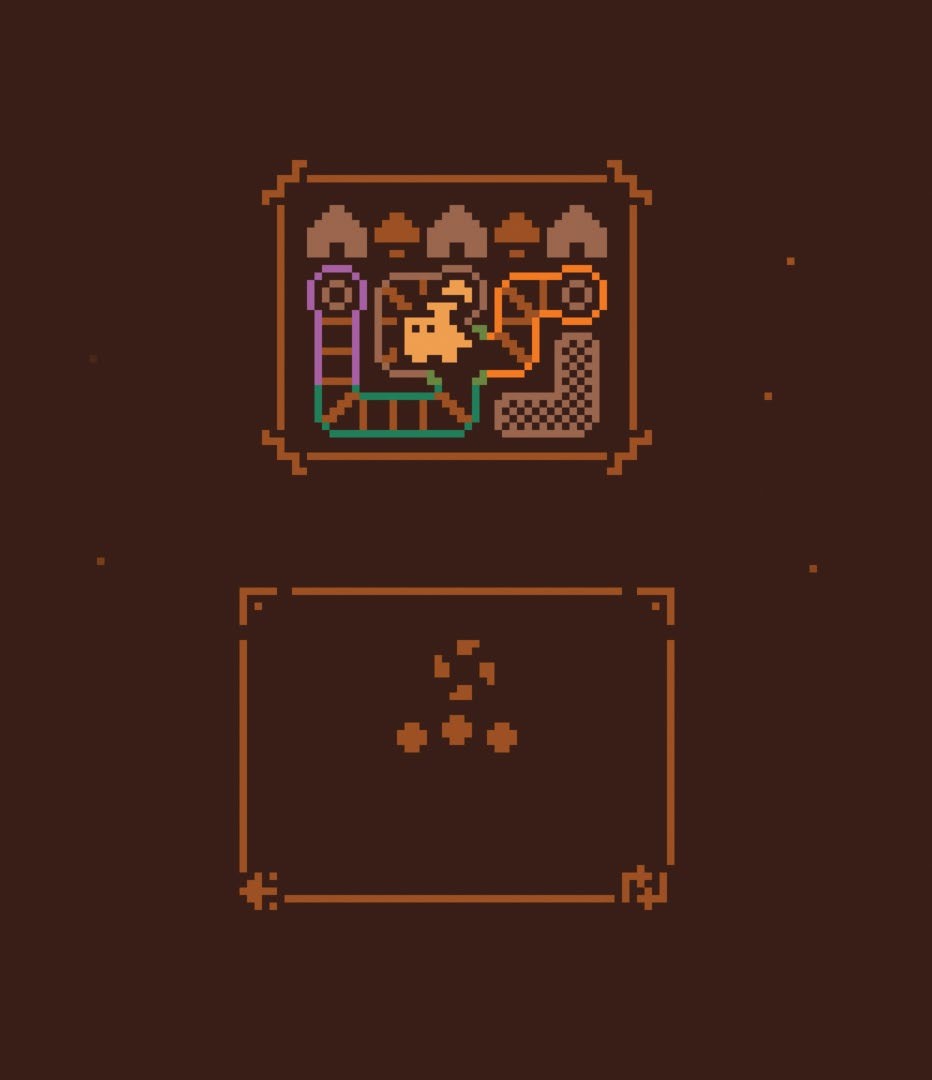I’ve played a lot of puzzle games, and usually the thing that most excites me is the New Idea: how it stands apart from the crowd of Sokoban clones and Portal-likes happily populating the internet. But that feels like the wrong tack with Raide, a game of intimate, tactile puzzling and unraveling secrets. If there is a big idea—some mechanic that sets it apart from the other train-based puzzle games (and there are quite a few)—I haven’t found it. The rules of the game are simple: you’re laying track segments between distant points, to connect houses together. In each level, you’re given a pile of track bits, and you must use every piece in the puzzle, even if a simpler solution presents itself. These rules are soon embellished with track-splitters and broken track (these, too, must be placed somewhere), and I had a challenging, engrossing time playing through the main story this evening.
It’s engrossing not just because of the clever-yet-fair puzzles, but because this is a wonderful little world to be in, with pixel art that tells you everything in only a thimble’s worth of colors and pixels, and puzzle pieces that feel satisfying to pick up and place (they make such a lovely clicking sound). The music also does a lot to build up the cozy, mysterious atmosphere, setting the perfect tone as you try to peck out the game’s secrets. There is more to Raide than meets the eye—there are more mechanics to discover, and more levels that make great use of them. More excuses to dim the lights, sit down with a coffee, and 86 get to work.

You watch as the train attempts to make the journey.